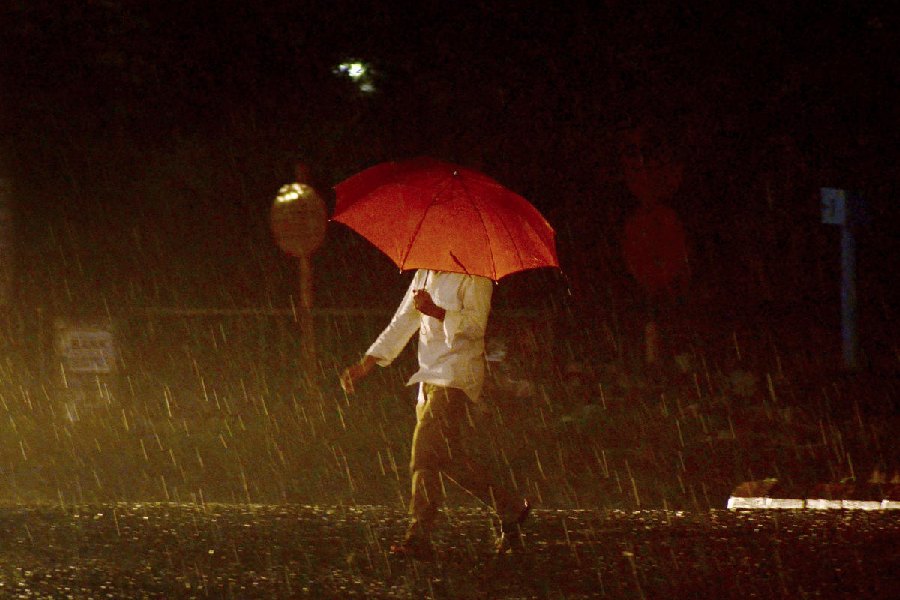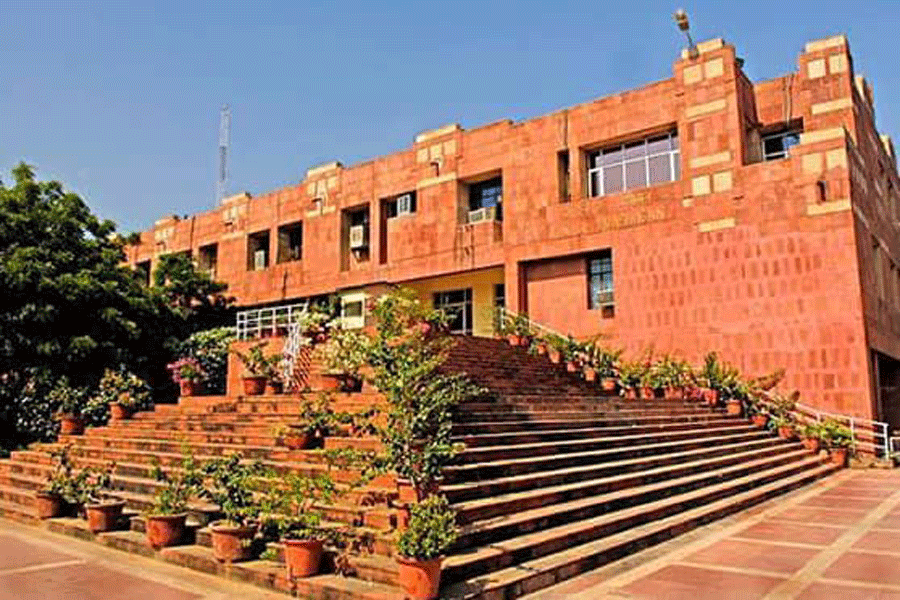 |
 |
 |
| (From top) The Lake Temple Road residence; Satyajit Ray at his Bishop Lefroy Road study; and Ray’s illustration of 100 Garpar from Jakhan Chhoto Chhilam |
“The houses that we live in are significant, wrapping up the years we spend in them, making them our own...To return to them is to return to a phase of your life that has passed, and to wonder which — the house or you — has changed most.” Melanie McFadyean in ‘Five Houses’, published in Granta: Loved Ones.
There could be a sharp divide among north and south Calcuttans laying claim over Satyajit. Born into the family of Upendrakishore and Sukumar Ray, Satyajit was born in north Calcutta, at 100 Garpar Road. But as his son says: “Baba was quintessentially a south Calcuttan.”
He had moved out of Garpar when he was five. Yet as Satyajit himself writes in Jakhan Chhoto Chhilam, his account of his childhood years: “I have lived in a number of houses, all of them in south Calcutta, but I have yet to see another house like the one on Garpar Road.” Garpar left enduring images in his mind, most of all, the press, U Ray and Sons, the inmates of the deaf and dumb school playing in the field next door, the Athenium Institution right across, where one of his most enduring creations, Lalmohan Ganguly, would study.
The move out of Garpar uprooted him in more ways than one. “I was cut off from everything intellectual,” Satyajit felt.
“The change in the family environment was enormous and Satyajit thinks this affected his life more than the change in financial circumstances. Suprabha Ray had taken her son, who had inherited the main characteristics of the Rays, from a highly conscious intellectual environment where discussion of everything of creative importance was normal, into the Das family, where no such intellectual awareness existed,” writes Marie Seton in Portrait of a Director. Later in life, Satyajit moved from house to house, and never perhaps became rooted again. He did not own a house.
Satyajit went back to 100 Garpar, the only house he revisited, to film a documentary on his father. He was not angst-ridden, but was nonetheless disappointed. “He found the front façade changed, the name U Ray and Sons obliterated from the building. He never went back,” recalls his son.
Garpar was the only north Calcutta address Satyajit lived in. In 1926, after his father’s death, Satyajit came to live with mother Suprabha at the Bakulbagan residence of “Shonamama”, Prashanta Kumar Das, his mother’s brother. But if he missed intellectual stimulation, the immense fun that he had with his extended maternal family, being taken to the circus, the carnivals, the magic shows, compensated for it. His paternal relatives visited them, too, and Jakhan Chhoto Chhilam is replete with stories of their eccentricities. “Chhotokaka would chew his food 32 times before he swallowed,” writes Satyajit.
Satyajit discovered the magic of light and shadow, which perhaps started his love affair with the camera, in Bakulbagan. He was admitted to Ballygunge Government High School when he was nine. It was also during his stay in this house that he watched his first film, a silent Bengali movie, Kalparinay. It was enough to keep him away from Bengali films for some time.
At Bakulbagan, another important chapter begun. Bijaya Das, his cousin and future wife, and her family, had joined them. It was their passion for western classical music that brought them together. He started to frequent Chor Bazar for records of Bach, Beethoven, Mozart, as he gravitated towards European cinema, finding Hollywood “too pretentious”.
 |
 |
 |
| (From top) Satyajit Ray in his Bishop Lefroy Road study in May 1979 ; a view of 100 Garpar; his Bakulbagan residence |
Today, when we revisit the Bakulbagan residence, with its huge red portico, the residents are reluctant to talk.
From Bakulbagan it was to Beltala Road in 1932, and to Rashbehari Avenue in 1934, where Shonamama built his house. “Manik was planted and rooted up as his uncle P.K. moved from one house to another...presumably these shiftings and shuntings intuitively caused him to develop a core so that even now he is a part of, yet apart from, his immediate surroundings,” writes Seton.
After a BSc in Economics and a couple of years in Santiniketan, Satyajit started his career in D J Keymer, an advertisement firm, for Rs 80 a month. “That was enough for him to start living separately at 47 Ballygunge Gardens flat with his mother,” says Partha Basu, Ray’s chronicler. Satyajit shifted out with Suprabha after 22 years of living with the extended family.
But the quiet environment of Santiniketan had spoilt him; he could not take the bustle of Golpark. “He wrote to his teacher Alex Arolson: ‘It is really very nerve-wracking’,” says Basu. But he adjusted. “I have seen him work during the pujas with mikes blaring all round,” says Basu, who is close to the family.
After growing up in middle-class Bhowanipore, the adult Satyajit found homes in rented flats in and around the Lake and Rashbehari area. He married Bijaya in 1948 -- from then all household matters were left to her. Bijaya’s penchant for collecting furniture and objets d’art saw the Ray family move through a series of homes in search of space. The choice of Bijaya’s addresses was happy, for Satyajit loved to be part of the middle-class south Calcutta milieu.
Ray was most comfortable at 3, Lake Temple Road. A four-room flat with a terrace, it afforded Satyajit the much-coveted open space. “Baba was very happy there,” recalls Sandip. “He took his evening walk on the terrace. All our family functions were held there.” This sprawling white building saw him at his creative best. “Sandesh was revived, Apur Sansar started and was followed by his best films. He also started composing his music,” says Sandip.
 |
1/1 Bishop Lefroy Road was a colossal, colonial flat, but Satyajit wasn’t too impressed. He missed the middle-class surroundings of Lake Temple Road. “Bishop Lefroy was sahebpara. It housed the Russian consulate and there was hardly any social interaction with the neighbours,” said Sandip. If it hadn’t been for Satyajit’s airy, well-lit and cheerful study, he would probably have shifted out. But the house grew on him where he lived the last two decades of his life and spent his most creative years, from Pratidwandi to Agantuk.
Satyajit did go back to his school for a function. To his utter amazement, he found that the enormous hall, the verandah, the classrooms had grown small, only to realise that he had grown, from 5 feet 3 inches to over 6 feet!










